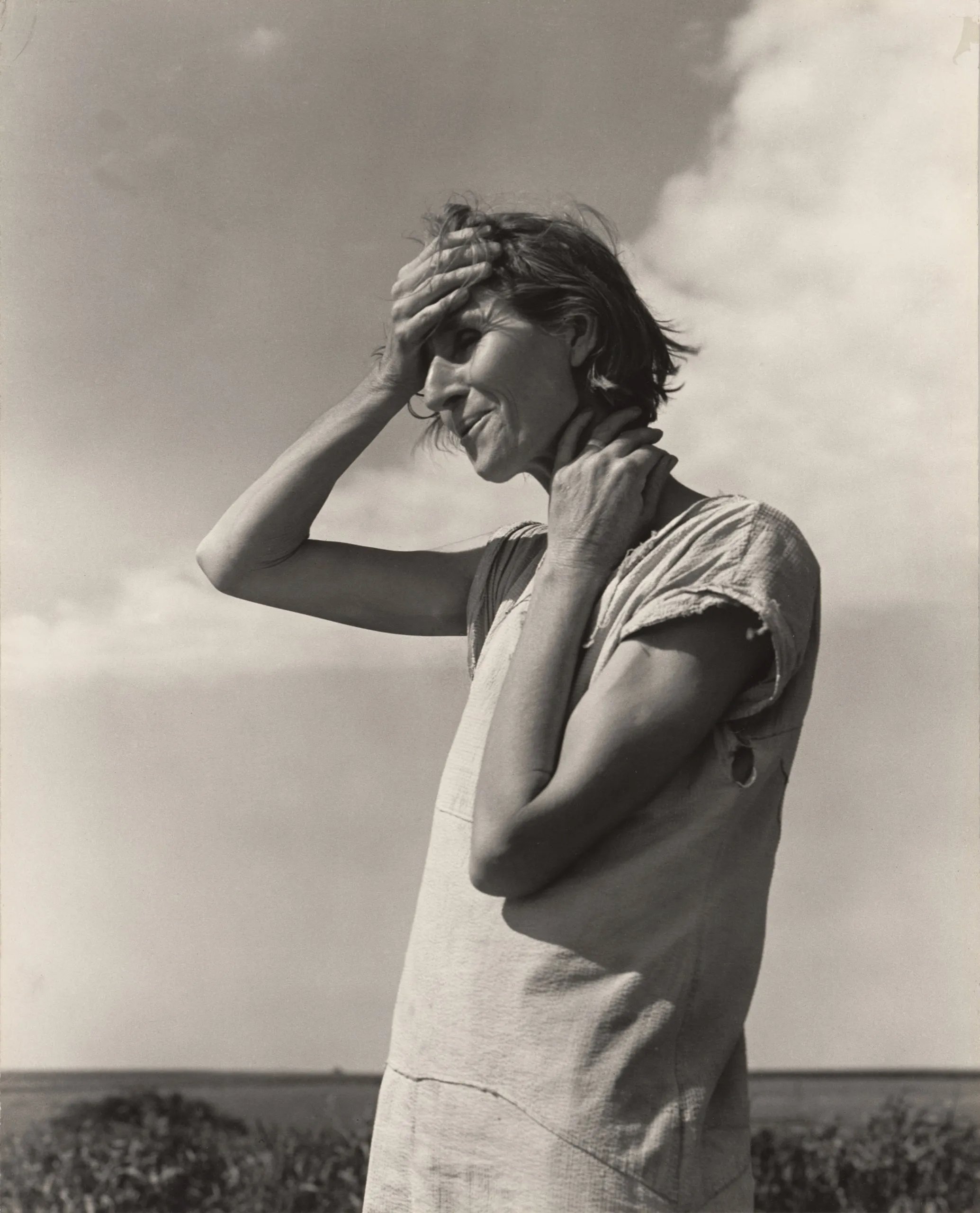Dorothea Lange
Dorothea Lange is a renowned American documentary photographer whose powerful images captured the human face of the Great Depression, World War II, and other significant events in American history. Her photographs not only helped to define the documentary photography genre but also played a crucial role in shaping public perception and government policy.
Early Life and Career
Dorothea Lange was born on May 26, 1895, in Hoboken, New Jersey. At a young age, she faced adversity, including contracting polio, which left her with a permanent limp. This experience would later influence her empathetic approach to her subjects.
Lange studied photography at the New York Training School for Teachers and then at Columbia University. In 1918, she moved to San Francisco, where she opened a successful portrait studio. Her life took a dramatic turn during the Great Depression when she decided to focus on documentary photography.
Photographic Style and Techniques
Lange's documentary photography was characterized by her ability to capture the human experience and evoke empathy in her viewers. She often used a large-format camera and preferred natural lighting to create a sense of intimacy and realism in her images.
Her compositions were carefully thought out, and she would often spend time getting to know her subjects, allowing her to create a deeper connection with them. This approach enabled Lange to capture the raw emotion and dignity of the people she photographed.
Career Highlights
In the 1930s, Lange began working for the Resettlement Administration (later the Farm Security Administration), documenting the lives of migrant workers and displaced families during the Great Depression. Her most famous photograph, "Migrant Mother," taken in 1936, became an iconic image of the era.
During World War II, Lange was hired by the War Relocation Authority to document the internment of Japanese Americans. Her photographs, which portrayed the unjust treatment of these citizens, were censored by the US government at the time and only released decades later.
Photography Gear
Throughout her career, Lange primarily used large-format cameras, such as the Graflex Series D, which allowed her to capture high-quality images with a great level of detail. She also occasionally used smaller format cameras like the Rolleiflex.
Photography Books
"Dorothea Lange: Words & Pictures" combines Lange's powerful photographs with her own words, offering readers an intimate understanding of her approach to photography and her ability to tell stories through her images.
"Impounded: Dorothea Lange and the Censored Images of Japanese American Internment" reveals the previously censored images Lange took during the internment of Japanese Americans during World War II. This book provides a unique historical context and insights into the power of photography to document and shed light on social issues.
"Dorothea Lange: A Life Beyond Limits" is a comprehensive biography that delves into the life and work of Lange, offering readers an in-depth understanding of her experiences, motivations, and the development of her photographic style.
"Dorothea Lange Book One (Farm Security Administration Photographs)" showcases some of Lange's most iconic images taken while she worked for the Farm Security Administration during the Great Depression, illustrating her ability to capture the struggles and resilience of everyday people.
"Dorothea Lange: Aperture Masters of Photography (The Aperture Masters of Photography Series)" is a curated collection of Lange's works, offering an overview of her career and highlighting her significant contributions to the field of documentary photography.
"Dorothea Lange: The Photographer Who Found the Faces of the Depression" focuses on Lange's most famous images taken during the Great Depression, providing insights into her unique approach to capturing the faces and stories of those who endured this difficult period in American history.
Quotes
"The camera is an instrument that teaches people how to see without a camera."
"Photography takes an instant out of time, altering life by holding it still."
"One should really use the camera as though tomorrow you'd be stricken blind."
"A documentary photograph is not a factual photograph per se. It's a photograph which carries the full meaning of the episode."
"I am trying here to say something about the despised, the defeated, the alienated. About death and disaster, about the wounded, the crippled, the helpless, the rootless, the dislocated. About finality. About the last ditch."
Legacy and Influence
Dorothea Lange's work has left an indelible mark on the world of documentary photography. Her empathetic and compassionate approach to her subjects has inspired generations of photographers, including Gordon Parks, Walker Evans, and Mary Ellen Mark.
Her photographs have also played an important role in shaping public opinion and influencing social policy, demonstrating the power of photography as a tool for social change. Lange's work has been exhibited in numerous museums and galleries around the world, and her impact on the field of documentary photography continues to be felt today.
Through her dedication and talent, Lange has helped to elevate documentary photography to an art form and has ensured that the struggles and resilience of her subjects are never forgotten. Her work stands as a testament to the importance of empathy and the human connection in photography, serving as a lasting inspiration to aspiring and established photographers alike.














Did you know that the Migrant Mother which sold for almost 300 thousand USD was almost destroyed when someone from maintenance threw it in the dumpster?